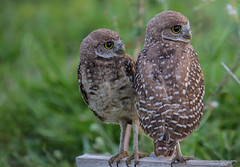![]()
![]()
![]()
Use LEFT and RIGHT arrow keys to navigate between flashcards;
Use UP and DOWN arrow keys to flip the card;
H to show hint;
A reads text to speech;
26 Cards in this Set
- Front
- Back
|
What is the climate of a Tundra? |
Less than 25cm precipitation Cold, dry air (Fact: Moist ground; all year there is permafrost---- permanently frozen soil.)
|
|
|
What are the plants and producers of a Tundra? |

Plants -Dwarf trees -Shrubs -Grasses -Mosses -Lichens (producer & consumer) -Algae -Liverworts -Flowers -Red-leafed plants
|
|
|
What are the animals of a Tundra? |

musk oxen -lemmings -caribou (reindeer) -polar bear -arctic foxes -arctic wolves -snowshoe hares
|
|
|
What is the climate of a Taiga or Coniferous Forest? |
30 – 80 cm precipitation; Long, cold winters Short, warm summers (Fact: Poor soil)
|
|
|
What are the plants and producers of a Taiga or Coniferous Forest? |
Evergreens / Coniferous Plants Leaves = green, waxy needles Reproductive structure = cones Trees: Spruces, Hemlocks, Firs,Pines
|
|
|
What are the animals of a Taiga or Coniferous Forest? |

Snowshoe Hares, Lynxes, Wolves, Moose,Elk Squirrels, Deer, Rabbits, Birds: GRAY Jays; Crossbills ; Warblers
|
|
|
What is the climate of Temperate or Deciduous Forest (Eastern USA) |
-moderate temperatures (not extreme) -4 seasons –hot summers and cold winters -good amount precipitation 75 – 125 cm (Fact: fertile soil because of dying leaves and organisms)
|
|
|
What are the animals of Temperate or Deciduous Forest (Eastern USA) |
-Foxes -Coyotes -Bobcats -Squirrels -Deer -Rabbit
Birds: BLUE Jays, falcons, hawks, thrashers, turkeys |
|
|
What are the plants of Temperate or Deciduous Forest (Eastern USA) |
-some coniferous trees -Deciduous Trees: -Leaves = flat & broad; fall off trees and plants -Reproductive structure = flowers -Oaks -Maples -Beeches -Hickories
|
|
|
Tropical Rainforest Climate |
250 – 1,000 cm Hot and Humid Constant temperature One season (summer) (Fact: poor soil)
|
|
|
Tropical Rainforest Plants |
-Epiphytes – plants growing off trees that take trees’ nutrients and water; parasitism - Orchids, ferns, vines (often grow on trees but not necessarily epiphytes) - Palm trees, Fern trees, etc. -most diverse plant life
|
|
|
Tropical Rainforest Animals |
-monkeys -sloths -parrots -MANY insect species -many bird species -most varied animal life
|
|
|
Savanna (Tropical Grasslands) Climate |
130cm (A lot is in a 2-3 week period of the rainy season.) Loooong dry, hot season Short wet season Serious droughts and wild fires
|
|
|
Savanna (Tropical Grasslands) Plants |
-Grasses with scattered trees or isolated trees -Grass is brown. -Trees have thinner trunks / stems
|
|
|
Savanna (Tropical Grasslands) Animals |
-largest land mammals! -giraffes, elephants, hippos, buffalo, etc. -gazelles -lions -wildebeests -ground squirrels -rabbits -birds
|
|
|
Desert Climate |
Less than 25 cm Hot, dry air (and dry soil) Extreme temperatures Some can drop below freezing.
|
|
|
Desert Plants |

-succulent, fleshy, water-storing stems and leaves -Cactus -Aloe plants -Roses
|
|
|
Desert Animals |

-Burrowing owls -Owls -Coyotes -Bobcats -Foxes -Roadrunners -Mule deer -cottontail rabbits -ground squirrels -birds -scorpions -snakes -lizards
|
|
|
Lichens |

Hardy species that can grow on trees or barren rocks; Combinations of fungus and algae |
|
|
Moss |

A non vascular plants that live in moist places, 2nd oldest group to diverge from the land plant lineage. Like liverworts, they are relatively small and lack vascular tissue |
|
|
Algae |

Grow in soil, on trees and on the bodies of turtles and frogs; smallest of all green plants |
|
|
Blue Arctic Willow Dwarf Tree |

these trees grow in the tundra. They have shallow roots |
|
|
Tropical Rainforest Canopy |

uppermost layer of forest where the branches meet |
|
|
Rainforest Emergent Layer |
the top layer of a rainforest, this layer consists of the tallest trees, 60-70m tall |
|
|
Rainforest Ferns |

flowerless, seedless vascular plants having roots, stems, and fronds and reproducing by spores |
|
|
Orchids in Tropical Rainforest |

One of the largest families of flowering plants, that lack varieties of flowers, woody structures, and monocots. Requires specialized pollinators. |

